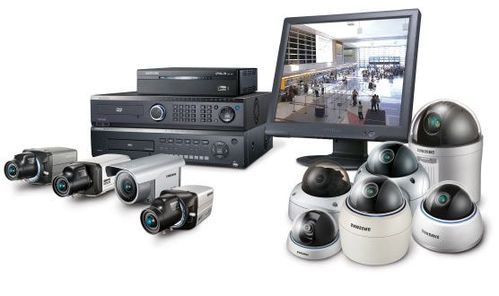
The Many Applications of CCTV Systems
- May 18, 2022
- 0

Closed-circuit television, or CCTV for short, is defined as a closed video camera system that transmits signals to a limited number of defined receivers—as opposed to open transmission from broadcast televisions.
CCTV cameras are typically installed in strategic positions and can record from angles or point-of-views otherwise unreachable to the human eye. The function we commonly associate with CCTV systems is security, detection of criminal activities, and crime deterrence.
What are some of the technologies that have helped elevate the modern CCTV system, and what applications do CCTV cameras have beyond those that immediately come to mind? Read on for a backgrounderon the components of CCTV systems and which industries use CCTV for their everyday operations.
How CCTV Systems Have Evolved
A CCTV camera’s four major components are its camera, lens, monitor, and recorder. The most noteworthy among these four components is the camera because it’s the one responsible forcapturingimportant footage or images. With that in mind, a CCTV camera operates with more complexity than an ordinary camera—it is left to operate on its own, must be more resistant to wear-and-tear, and must capture images in more challenging situations.
Some advanced camera systems also employ automated optics control, which is a mechanism that enables a camera’s zoom, focus, and iris functions to capture clear images of moving targets. To this end, mini motors for advanced camera systems are developed for optimum mobility, long filming cycles, and greater protection against the elements.
CCTV Usage in Multiple Industries
The market for CCTV systems is now very much alive with affordable, configurable, and highly flexible technologies. Here are just a few of the remarkable applications of CCTV systems.
- Crime prevention. Crime prevention and deterrence is still the foremost use of CCTV systems. In the ‘60s, institutions like the NYPD pioneered the widespread usage of CCTV for crime prevention because the technology costs less than expanding the size of the police force. Now, CCTV cameras are a core part of crime prevention and law enforcement, spanning homes, government offices, and numerous commercial and industrial establishments. They help record evidence of criminal activity and pre-emptively counter such activities.
- Wearable and airborne surveillance. The buck doesn’t stop at wall-mounted CCTV cameras. Modern technology also includes the usage of miniature wearable CCTV cameras and drone-mounted cameras for aerial surveillance, another neat application of automated optics control. These types of cameras make for more covert, as well as more expansive area investigation.
- Industrial processes.Industrial facilities have also adoptedwidespread use of CCTV cameras. Some camera systems in high-tech plants also come with line-scan and thermographic features. In this setting, CCTV cameras are valuable tools for maintenance,quality control, and safety compliance.
- Transport monitoring. Another key function of CCTV cameras is transport surveillance. These systems are designed specifically to monitor phenomena such as traffic flow, road congestion, and vehicular accidents. Aside from being mounted on the streets, CCTV camera systems can also be installed on moving trains and can be utilized to ensure smooth and safe journeys for daily commuters.
- Surprisingly, one of the earliest functions of the modern CCTV system was for the recording of professional boxing matches, such as that of the “Thrilla in Manila” in 1975. Although closed-circuit televising for sports has since been replaced by pay-per-view television, the camera technologies are still widely used in facilities like sports stadiums. The CCTV signals from the pitch, court, or field can be transmitted to other monitors spread out across the stadium. That way, spectators can enjoy close-ups of the action even when they’re far away from it.
From safety and security to manufacturing and entertainment, CCTV technology serves a wide number of uses. With their help, it’s easier than ever to keep an “eagle eye” out on your surroundings.



















